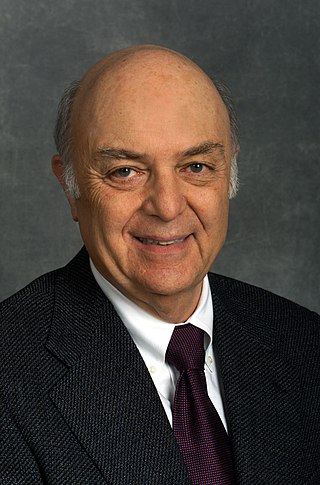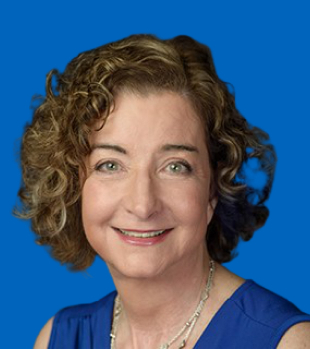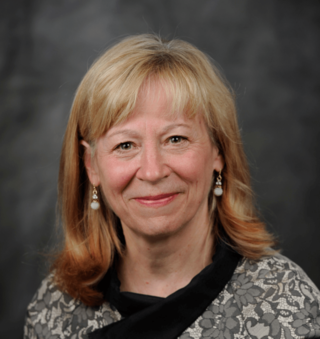Related Research Articles

In condensed matter physics, a Bose–Einstein condensate (BEC) is a state of matter that is typically formed when a gas of bosons at very low densities is cooled to temperatures very close to absolute zero. Under such conditions, a large fraction of bosons occupy the lowest quantum state, at which microscopic quantum-mechanical phenomena, particularly wavefunction interference, become apparent macroscopically. More generally, condensation refers to the appearance of macroscopic occupation of one or several states: for example, in BCS theory, a superconductor is a condensate of Cooper pairs. As such, condensation can be associated with phase transition, and the macroscopic occupation of the state is the order parameter.

Electromagnetically induced transparency (EIT) is a coherent optical nonlinearity which renders a medium transparent within a narrow spectral range around an absorption line. Extreme dispersion is also created within this transparency "window" which leads to "slow light", described below. It is in essence a quantum interference effect that permits the propagation of light through an otherwise opaque atomic medium.

Lene Vestergaard Hau is a Danish physicist and educator. She is the Mallinckrodt Professor of Physics and of Applied Physics at Harvard University.
Deep-level transient spectroscopy (DLTS) is an experimental tool for studying electrically active defects in semiconductors. DLTS establishes fundamental defect parameters and measures their concentration in the material. Some of the parameters are considered as defect "finger prints" used for their identifications and analysis.
Daniel Kleppner, born 1932, is the Lester Wolfe Professor Emeritus of Physics at Massachusetts Institute of Technology (MIT) and co-founder and co-director of the MIT-Harvard Center for Ultracold Atoms. His areas of science include atomic, molecular, and optical physics, and his research interests include experimental atomic physics, laser spectroscopy, and high precision measurements.

Marvin Lou Cohen is an American–Canadian theoretical physicist. He is a physics professor at the University of California, Berkeley. Cohen is a leading expert in the field of condensed matter physics. He is widely known for his seminal work on the electronic structure of solids.
Delbrück scattering, the deflection of high-energy photons in the Coulomb field of nuclei as a consequence of vacuum polarization, was observed in 1975. The related process of the scattering of light by light, also a consequence of vacuum polarization, was not observed until 1998. In both cases, it is a process described by quantum electrodynamics.
The Irving Langmuir Prize in Chemical Physics is awarded annually, in even years by the American Chemical Society and in odd years by the American Physical Society. The award is meant to recognize and encourage outstanding interdisciplinary research in chemistry and physics, in the spirit of Irving Langmuir. A nominee must have made an outstanding contribution to chemical physics or physical chemistry within the 10 years preceding the year in which the award is made. The award will be granted without restriction, except that the recipient must be a resident of the United States.
Graham R. Fleming is a professor of chemistry at the University of California, Berkeley and member of the Kavli Energy NanoScience Institute based at UCB.

Philip H. Bucksbaum is an American atomic physicist, the Marguerite Blake Wilbur Professor in Natural Science in the Departments of Physics, Applied Physics, and Photon Science at Stanford University and the SLAC National Accelerator Laboratory. He also directs the Stanford PULSE Institute.

Laura H. Greene is the Marie Krafft Professor of Physics at Florida State University and chief scientist at the National High Magnetic Field Laboratory. She was previously a professor of physics at the University of Illinois at Urbana-Champaign. In September 2021, she was appointed to the President's Council of Advisors on Science and Technology (PCAST).

Geraldine Lee Richmond is an American chemist and physical chemist who is serving as the Under Secretary of Energy for Science in the US Department of Energy. Richmond was confirmed to her DOE role by the United States Senate on November 5, 2021. Richmond is the Presidential Chair in Science and professor of chemistry at the University of Oregon (UO). She conducts fundamental research to understand the chemistry and physics of complex surfaces and interfaces. These understandings are most relevant to energy production, atmospheric chemistry and remediation of the environment. Throughout her career she has worked to increase the number and success of women scientists in the U.S. and in many developing countries in Africa, Asia and South America. Richmond has served as president of the American Association for the Advancement of Science, and she received the 2013 National Medal of Science.
Takeshi Oka,, is a Japanese-American spectroscopist and astronomer specializing in the field of galactic astronomy, known as a pioneer of astrochemistry and the co-discoverer of interstellar trihydrogen cation . He is now R.A. Milliken Distinguished Service Emeritus Professor, Departments of Astronomy and Astrophysics, Chemistry; Enrico Fermi Institute; and the College of University of Chicago.
Laura Maria Herz is a professor of physics at the University of Oxford. She works on femtosecond spectroscopy for the analysis of semiconductor materials.
Katherine Birgitta Whaley is a professor of chemistry at the University of California Berkeley and a senior faculty scientist in the Division of Chemical Sciences at Lawrence Berkeley National Laboratory. At UC Berkeley, Whaley is the director of the Berkeley Quantum Information and Computation Center, a member of the executive board for the Center for Quantum Coherent Science, and a member of the Kavli Energy Nanosciences Institute. At Lawrence Berkeley National Laboratory, Whaley is a member of the Quantum Algorithms Team for Chemical Sciences in the research area of resource-efficient algorithms.
Petra Rudolf is a German and Italian solid state physicist. As of 2003, Rudolf has been a professor at the Materials Science Centre, University of Groningen, Netherlands.
Laura B. Eisenstein (1942–1985) was a professor in the physics department at the University of Illinois until her early death. Eisenstein was known for her contributions to the understanding of light-energy transduction mechanisms in biological molecules and their higher order assemblies. She was an experimentalist and spectroscopist who was particularly well known for her contributions applying the techniques of x-ray absorption spectroscopy and time-resolved resonance Raman spectroscopy to the study of biomolecules. These studies indicated that phenomena such as quantum-mechanical tunnelling can be successfully investigated even in soft-matter systems like proteins.
Gabriela S. Schlau-Cohen is a Thomas D. and Virginia W. Cabot Career Development Associate Professor at MIT in the Department of Chemistry.

Majed Chergui is a Swiss and French physicist specialized in ultrafast dynamics of light-induced processes. He is a professor at EPFL, head of the Laboratory of Ultrafast Spectroscopy at EPFL's School of Basic Sciences, and founding director of the Lausanne Centre for Ultrafast Science (LACUS).
Mohindar Singh Seehra is an Indian-American Physicist, academic and researcher. He is Eberly Distinguished Professor Emeritus at West Virginia University (WVU).
References
- ↑ "Harvard Physics Department - PhD Theses: 2000 to present". Physics.harvard.edu. 2012-09-26. Retrieved 2013-01-26.
- 1 2 "UC Berkeley, College of Chemistry - News and Publications - Chemistry welcomes Naomi Ginsberg: Bringing photosynthesis to light". Chemistry.berkeley.edu. 2011-01-18. Archived from the original on 2015-04-02. Retrieved 2013-01-26.
- ↑ Ginsberg, N. S.; Garner, S. R.; Hau, L. V. (2007). "Coherent control of optical information with matter wave dynamics : Abstract". Nature. 445 (7128): 623–626. doi:10.1038/nature05493. PMID 17287804. S2CID 4324343.
- ↑ "Research - Ginsberg Group". UC Berkeley. Retrieved 2013-01-26.
- ↑ "Interdisciplinary". berkeley.edu. Archived from the original on 2013-01-12. Retrieved 2013-01-25.
- ↑ "2012 Young Faculty Award Recipients". Darpa.mil. Archived from the original on 2013-02-21. Retrieved 2013-01-26.
- ↑ "Sloan Fellowships Give Research Boost to Nine Young Faculty". University of California, Berkeley . Retrieved Mar 11, 2015.
- ↑ "Fellows nominated in 2021 by the Division of Chemical Physics". APS Fellows archive. American Physical Society. Retrieved 2021-10-22.